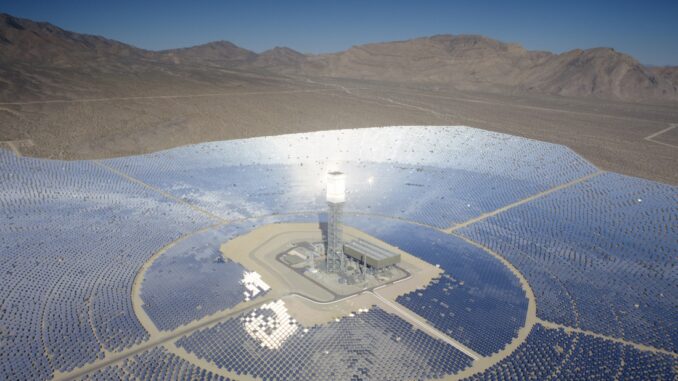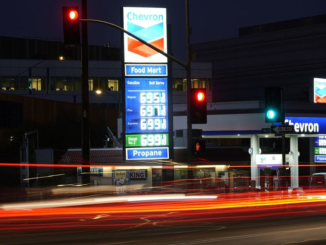
The Ivanpah Solar Electric Generating System, once hailed as a groundbreaking achievement in renewable energy, is on the brink of a partial shutdown that underscores the challenges facing large-scale solar thermal projects. Located in California’s Mojave Desert near the Nevada border, the facility—known for its towering structures and vast field of mirrors—will see two of its three units decommissioned starting in 2026, with the potential for a full closure looming. This development comes after years of underperformance, high operational costs, and environmental controversies, raising questions about the viability of subsidized green energy initiatives.
Built at a staggering total cost of approximately $2.2 billion, Ivanpah has been a symbol of ambitious climate goals backed by substantial government support. But as cheaper photovoltaic (PV) solar panels dominate the market, the project’s concentrated solar power (CSP) technology has proven inefficient and uneconomical. With no finalized plan for land reclamation in place for the shutdown, the site’s future remains uncertain, potentially leaving thousands of acres of public land scarred without restoration.
Are you Paying High Taxes in New Jersey, New York, or California?
The Staggering Total Cost: Billions in Construction, Subsidies, and Tax Incentives
Ivanpah’s development was no small undertaking. The project’s construction costs alone totaled around $2.18 billion, funded through a mix of private investment and heavy federal backing.
The U.S. Department of Energy provided $1.6 billion in loan guarantees in 2011, enabling the project’s owners—NRG Energy, Google, and BrightSource Energy—to secure financing amid high risks.
This loan was part of the Obama administration’s push for clean energy, but critics argue it represented a massive taxpayer gamble on unproven technology. Beyond the loans, Ivanpah benefited from significant subsidies and tax incentives. These included a federal investment tax credit estimated at over $500 million, a $535 million grant from the Department of Energy, and a 30% tax credit on qualifying expenditures.
When adjusted for inflation and additional incentives, the total public support likely exceeds $2 billion, effectively doubling the financial burden on taxpayers. The facility was built on public land managed by the Bureau of Land Management (BLM), further reducing costs for developers through low-cost leasing. Despite this infusion of funds, Ivanpah has consistently fallen short of its projected output. Designed to generate 392 megawatts (MW) of power—enough for about 140,000 homes—the plant has produced only a fraction of its capacity due to technical issues, weather dependencies, and the need for natural gas backups to maintain operations.
Adjusted for 2020 dollars, the specific cost per kilowatt came in at over $6,200, far higher than modern PV alternatives.
Burden on Consumers: Higher Electricity Bills from Overpriced Power
The financial fallout from Ivanpah extends beyond taxpayers to California ratepayers. Pacific Gas & Electric (PG&E) and Southern California Edison signed long-term power purchase agreements (PPAs) with Ivanpah in the early 2010s, committing to buy electricity at rates four to five times higher than prevailing market prices for renewable energy.
These contracts, approved by regulators, locked in costs estimated at $180 per megawatt-hour (MWh) or more, compared to under $40/MWh for newer PV solar today.
PG&E’s recent decision to terminate its PPAs with two of Ivanpah’s units was driven by these economics, with the utility stating that ending the agreements would save customers money compared to continuing through 2039.
Similarly, Edison is in discussions that could lead to the third unit’s closure.
Critics point out that consumers have already borne the brunt of these inflated rates, contributing to California’s status as having some of the highest electricity prices in the nation. The reliance on natural gas for auxiliary power—approved despite the plant’s “solar” branding—further inflated costs, as it contradicted the project’s green credentials while adding to operational expenses passed on to households.
In essence, Ivanpah’s model forced ratepayers to subsidize an experimental technology that never delivered on its promises, highlighting how mandated renewable portfolios can drive up energy bills without proportional benefits.
Land Reclamation Uncertainty: 173,500 Heliostats and No Finalized Plan
One of the most concerning aspects of Ivanpah’s impending shutdown is the lack of a finalized land reclamation plan. The facility spans 3,500 acres of BLM-managed public land and features 173,500 heliostats—each equipped with two mirrors, totaling over 347,000 reflective surfaces—that concentrate sunlight onto three 459-foot-tall towers.
These heliostats, often misidentified as photovoltaic mirrors, are part of a CSP system that has drawn criticism for its environmental impact, including the incineration of thousands of birds and the disruption of desert tortoise habitats.A conceptual decommissioning and reclamation plan was outlined in 2009 during the project’s environmental impact statement (EIS) process. This plan calls for the removal of all aboveground structures, including heliostats and mirrors, using mechanical methods, with foundations excavated to at least 3 feet below grade. The site would then be recontoured to match natural topography, with soil decompaction, topsoil redistribution, and revegetation using native species like saltbush and buckwheat to restore the Mojave Desert ecosystem. Monitoring would extend for up to 9 years post-decommissioning, focusing on erosion control, invasive species management, and habitat recovery.
However, this plan remains conceptual and predates the project’s construction. For the 2026 partial shutdown, NRG Energy is seeking approvals from state and federal officials to begin decommissioning, with the land potentially repurposed for other uses—possibly new PV installations.
Recent reports indicate no updated or finalized reclamation strategy has been approved specifically for this closure, leaving questions about who will bear the costs and timeline for restoring the disturbed land.
If the site is repurposed rather than fully reclaimed, the environmental legacy of Ivanpah could persist indefinitely, with minimal restoration to its pre-project state.
The EIS emphasized compliance with laws and standards at the time of closure, but with the shutdown accelerated by decades, regulatory hurdles and funding for full reclamation remain unresolved. This ambiguity amplifies concerns that taxpayers could foot yet another bill for cleaning up a subsidized project that underdelivered.
Lessons from Ivanpah: A Cautionary Tale for Renewable Energy
Ivanpah’s story is one of innovation overshadowed by reality. Launched in 2014 amid fanfare from environmentalists and policymakers, the plant was meant to showcase CSP’s potential. Instead, it became a $2.2 billion emblem of inefficiency, reliant on natural gas, harmful to wildlife, and outpaced by cheaper technologies.
As two units prepare to go dark and the third hangs in the balance, the shutdown signals a broader shift away from costly solar thermal projects toward more affordable PV and battery storage solutions.
For California, already grappling with high energy costs and reliability issues, Ivanpah’s failure serves as a reminder that aggressive green mandates must prioritize economic sense over ideological appeal. Without finalized reclamation, the desert site risks becoming a lasting scar—a multibillion-dollar monument to good intentions gone awry. As the energy transition accelerates, policymakers would do well to learn from Ivanpah’s missteps to avoid repeating them.
Investors and advertisers are running to oil and gas away from Net Zero and renewable energy. Oil and gas have given billions back to shareholders, while renewable energy has had 40 years and is not renewable nor sustainable.
Got A Tax Burden in 2025?
Crude Oil, LNG, Jet Fuel price quote
ENB Top News
ENB
Energy Dashboard
ENB Podcast
ENB Substack






Be the first to comment